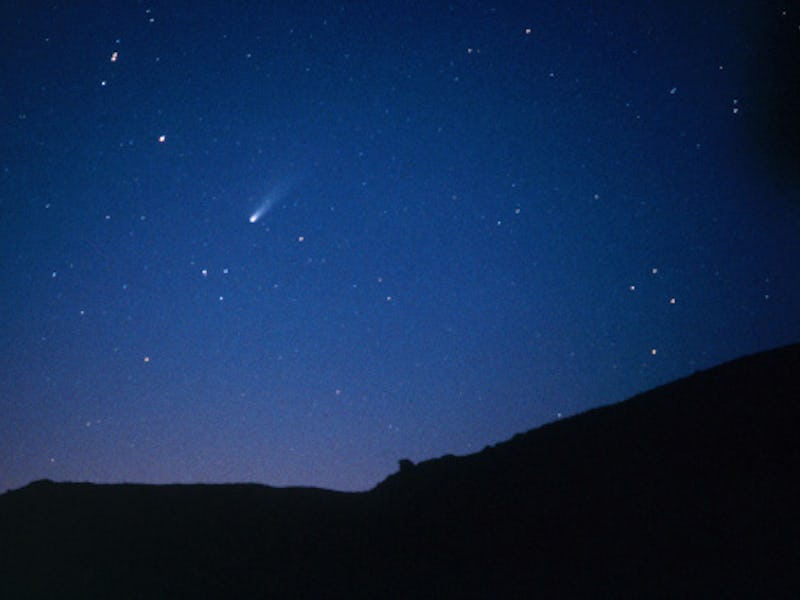Where Will Humans Be When Halley's Comet Passes by in 2062?
Today is the 30th anniversary of the 1986 visit by Halley's comet.

Today marks the 30th anniversary of the last time we could see with our naked eyes Halley’s comet from Earth. That means there are 46 years before this giant snowball passes by our planet again. But where will humans be in the year 2062?
Many of us will be retired — but probably not in Miami, which may be well on its way to a watery death in that giant, growing puddle we call the Atlantic Ocean. Some of us will be dead, or cryogenically frozen like baseball player Ted Williams, whose head and body are floating in two pieces in a vat of liquid nitrogen in Scottsdale, Arizona. In that case, it might be important to note in your will what it’ll take to wake you up, because maybe a comet that flies by Earth every 76 years won’t be as cool then as it seems now.
Comet 1P/Halley as taken March 8, 1986 by W. Liller, Easter Island, part of the International Halley Watch (IHW) Large Scale Phenomena Network.
Ah, 30 years seems like yesterday. The year 1986 welcomed an international armada of space probes from Russia, Japan, and Europe all hoping to meet up and get to know Halley’s Comet. The spacecraft Giotto, named after the Italian painter Giotto di Bondone who painted the comet’s portrait back in 1301, flew closest to Halley’s Comet and basked in her halo of space dust.
If things go according to plan, NASA will have sent humans to Mars and the Moon on Orion by 2023. As NASA would have it, this would be old news, because human strolls into deep space would have been happening annually for four decades by 2062.
Another thing NASA hopes will happen: Our Asteroid Redirect Mission, which involves some Hulk-like robotic spacecraft ripping a four-meter chunk out of an unsuspecting asteroid just passing by Earth and hurling its hand full of asteroid meat into lunar orbit, will have gone off without a hitch.
Again, we hope this will happen some time in the ‘20s so we can hurry up and mine that chunk of asteroid for water to use to propel ourselves out into more space to find more asteroids that we can mine for water to go further and further, flinging giant space objects from one orbit to the next.
Maybe we’ll be able to grab a piece of that famous little Halley while we have the chance.